Rome
The final stop in our grand tour was Rome, la città eterna (the eternal city). Our hotel, the Hotel Ponte Sisto, was perfectly located right near the Tiber and within easy walking distance of all the sites on our agenda.
We ate at three restaurants in Rome, although only two are noteworthy. The first night we ate at Coco Drillo (Crocodile), which is near the river. Very nice restaurant owned by a Brit ex-pat who used to be the Rome correspondant for Reuters. The second night we ate at a restaurant in Piazza Navona. I don't recall the name. It was good, but nothing special. But the last night was terrific - the restaurant is called Sorra Lella, and its on Little Tiber Island, which is an island in the middle of the Tiber, near the Rome Synagogue.
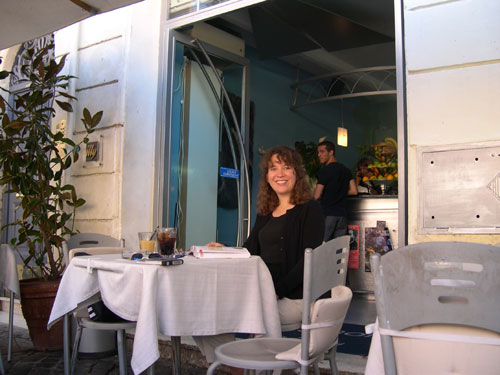 | After arriving in Rome we walked to the nearby Campo di Fiori, which is a farmers market that is also home to a number of trattorias. We had a nice lunch of pizza and salad. |
 | In the center of the Campo is a statue to Giordano Bruno, the philosopher-monk who had the gall to postulate that the earth revolved around the Sun. The Catholic church disagreed with that idea, and so burned him at the stake in 1600. |
 | The Piazza Navona, with its three fountains, is one of the centers of Italian social life. The central foundtain, the Fountain of the Four Rivers (fontana dei quattro fiumi) has an Egyptian obelisk. |
 | Ellen in front of the Four Rivers fountain. |
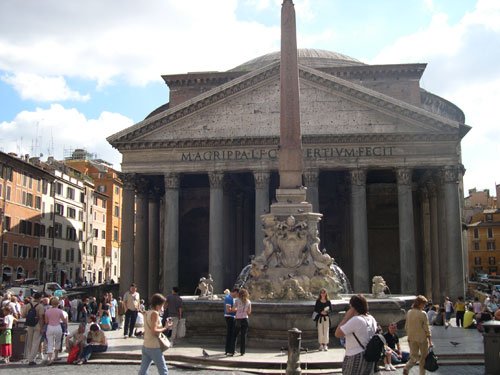 | The Pantheon (temple of All Gods) was originally designed as a temple to all Roman Gods, and was then turned into a Church. We see another Egyptian Obelisk in front of it. |
 | Inside the Pantheon. |
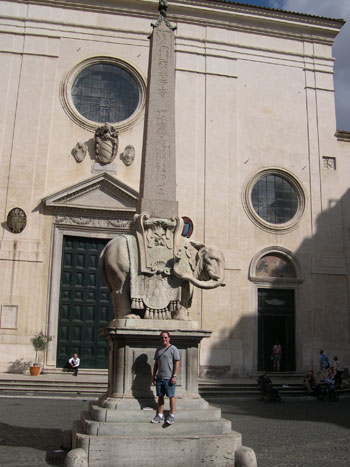 | The Piazza di Minerva has another obelisk. This one is atop an elephant. No idea what that means. |
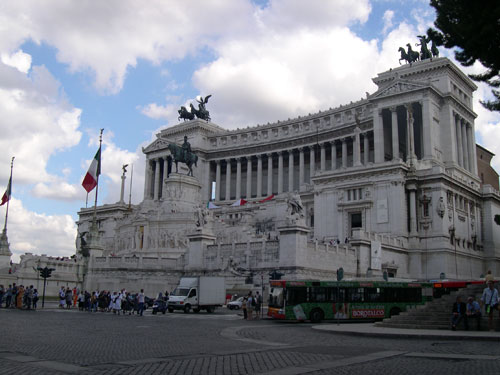 | The Vittorio Emmanuel II monument, which honors the King under whom Italy was finally united as a single country around 1860. |
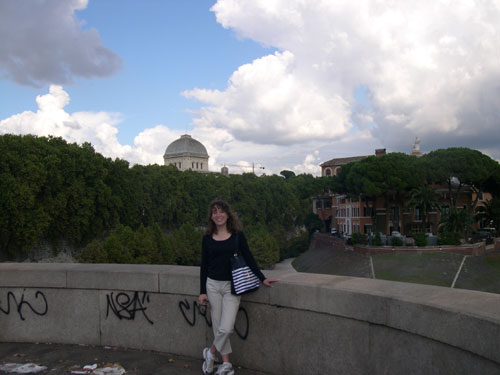 | Ellen on the Ponte Garibaldi, which crosses the Tiber just up from Little Tiber Island, which is seen behind her. Today it is home to a hospital, and a terrific restaurant (Sora Lella) where we ate on our last evening in Rome. The Rome Synagogue dome (a rare square shaped dome) is seen as well. |
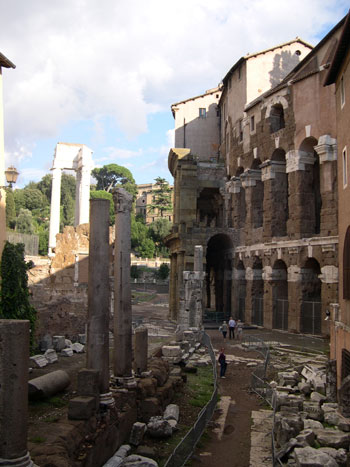 | The teatro di Marcello, which is now partially used as an apartment building. |
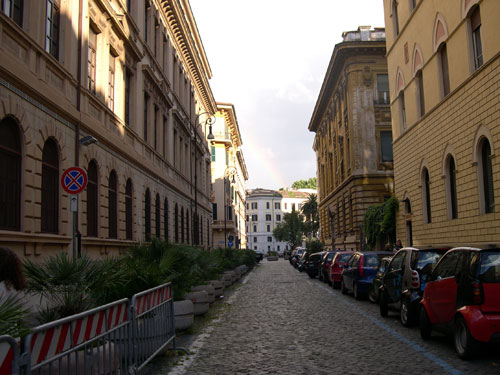 | The streets of the old Ghetto, which was razed and rebuilt after the ghetto was abolished. |
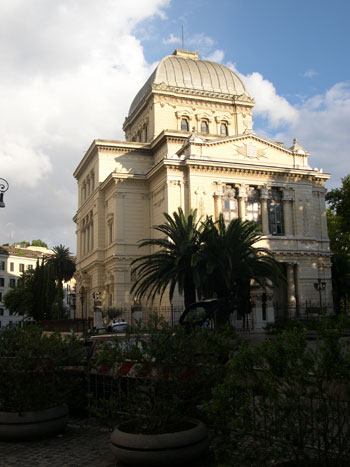 | The Synagogue of Rome. Ellen and I attended services there on our last evening in Rome. |
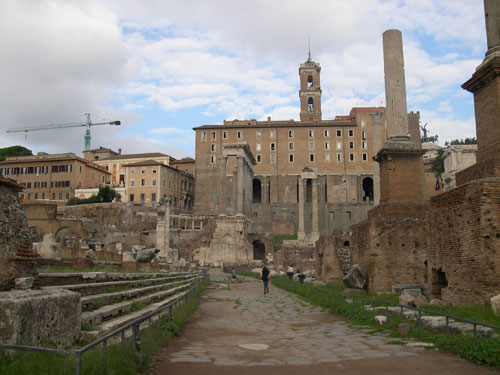 | Inside the old Roman Forum. |
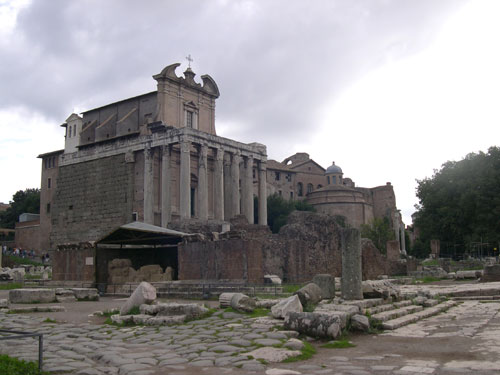 | Inside the old Roman Forum. |
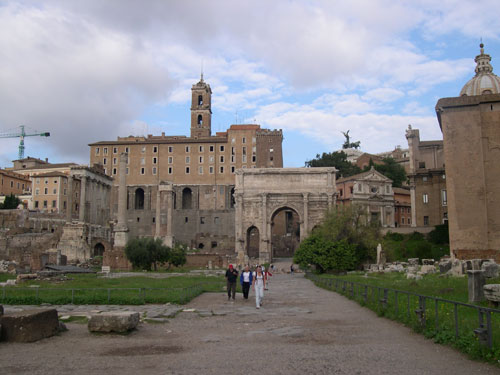 | Inside the old Roman Forum. The Arch of Septimus Severus is in the center. |
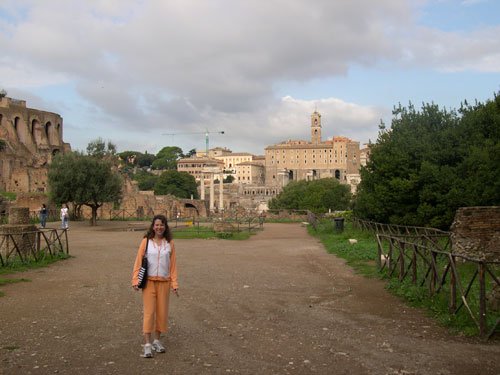 | Inside the old Roman Forum. We were heading to meet our tour guide at the Colisseum early Wednesday morning, so were fortunate to be able to walk around the forum before the crowds showed up. |
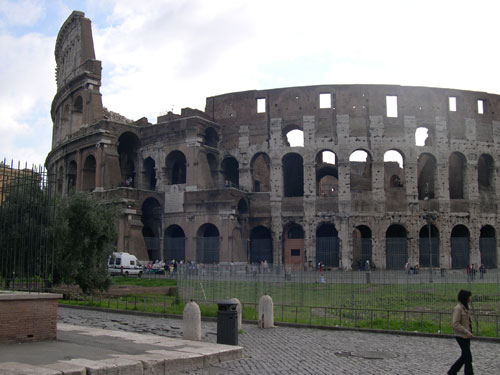 | Our tour of Ancient Rome started with the Colisseum. |
 | Interior of the Colisseum. |
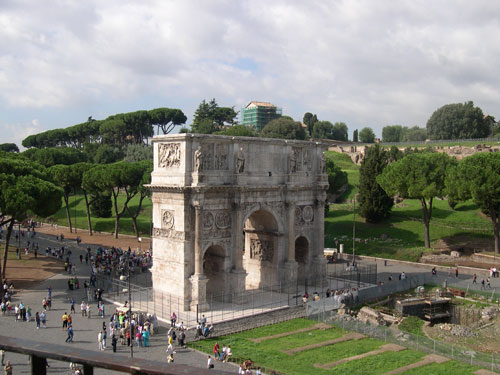 | The Arch of Constantine. Erected by the Emperor Constantine in 315 BC to commemorate the triumph of Constantine I after his victory over Maxentius in the battle at the Milvian Bridge in 312 CE (in the Roman Civil War). |
 | Interior of the Colisseum. |
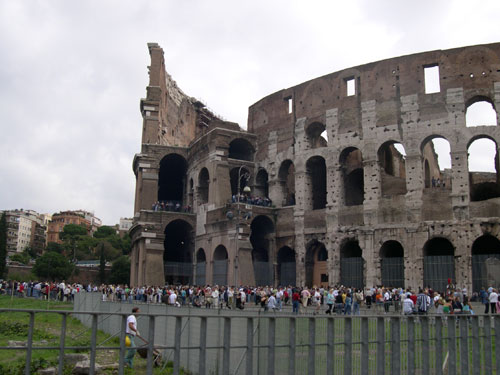 | This shot shows how the two outer rings of the Colisseum collapsed in certain sections. |
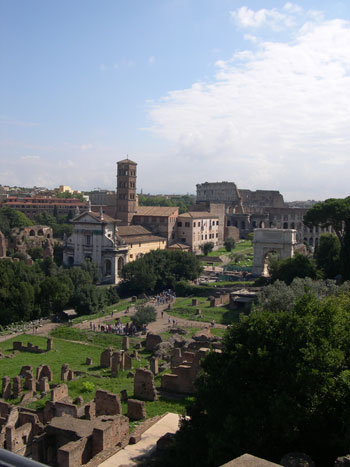 | A view of the Forum from atop the Palatine, which was the hill on which many of Romes wealthiest lived, until the Emperors pushed them out and made the entire hill the home for the Emperors. |
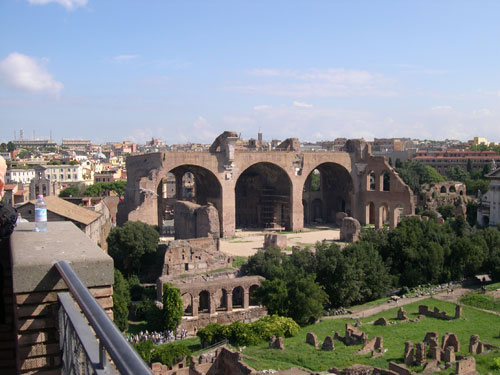 | The Basilica of Maxentius (Basilica Maxentii) or the Basilica of Constantine, it has two names. Maxentius started it, but Constantine, after defeating Max, finished it. |
 | Another view of the Forum, seen from the Palatine. |
 | We were fortunate in that the weather was sunny and warm. |
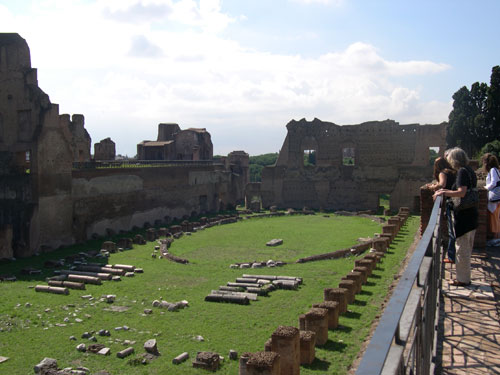 | The Stadium of Domitian. Sporting events for the private enjoyment of the elite were held here. |
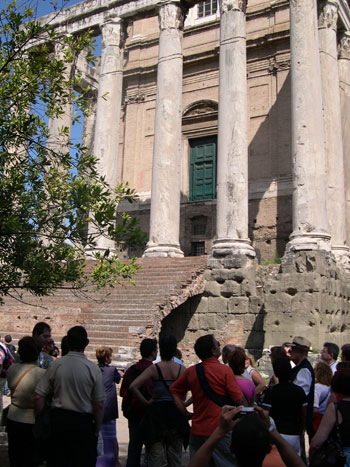 | The Temple of Antonio and Faustina. Whats interesting is that green door. Over the centuries, the forum was buried under dirt, and a christian church, with its entry at that green door, were erected over the old roman temple. When the forum was excavated, the door was left high and dry. |
 | After Julius Caesar was assassintated (in another part of Rome) his supporters brought his body to the Forum, and it was burned on this spot. |
 | Trajans Market, erected by the Emperor Trajan to commemorate the conquest of Dacia, modern-day Romania. |
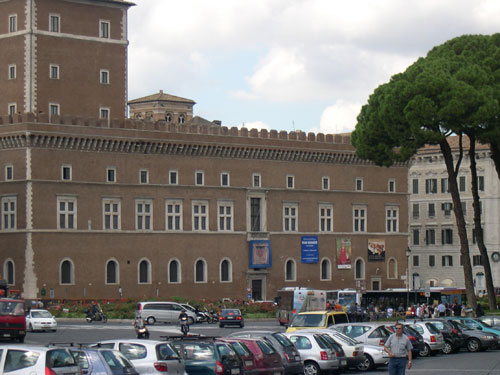 | The window in the center of this building is the spot from which Mussolini would address the Roman crowds. |
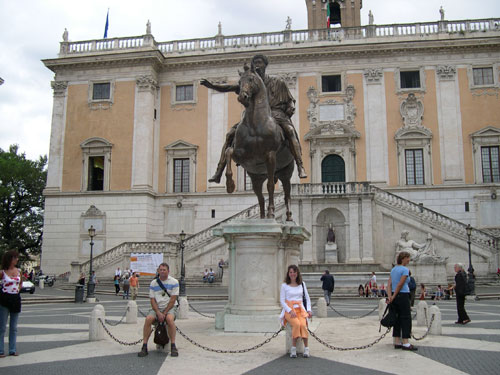 | After lunch we toured teh Capitoline Hill area, adjacent to the Forum. This is the Piazza del Campidoglio, with a statue of Marcus Aurelius. |
 | Another view of the Forum. |
 | Even this height was a bit scary for Ellen. |
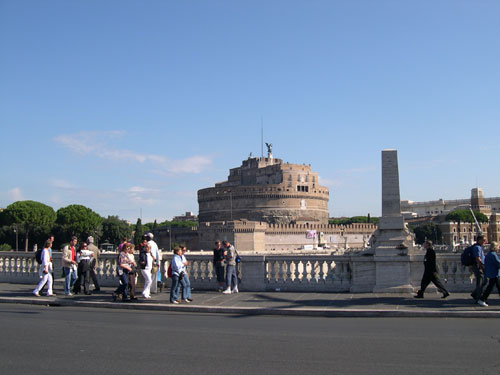 | Thursday morning we walked over to Vatican City. Our first stop was the Castel Sant' Angelo. It was originally constructed by the Emperor Hadrian in AD 135 as his mausoleum. It was later used as a prison. Later it was connected by secret passageway to the Vatican, for use in case of emergency. |
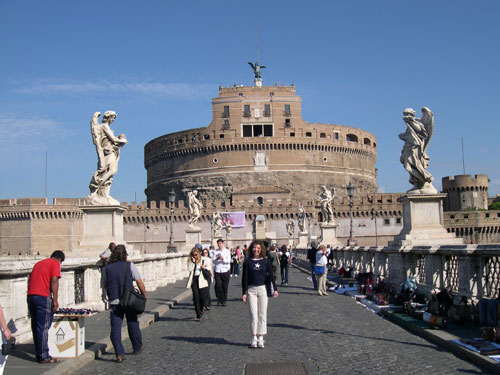 | In the opera Tosca, the heroine throws herself off the roof of the Castel. |
 | The top of the Castel offers great views of the Basilica. |
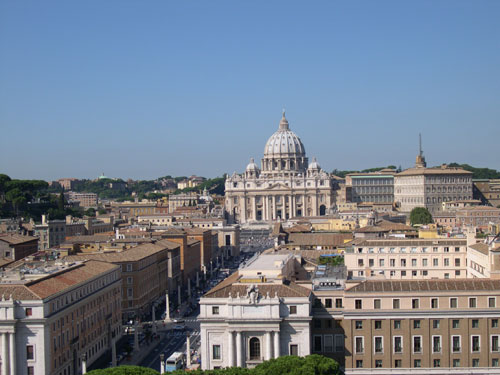 | |
 | |
 | The Vatican Museum is supposed to be one of the great museums in Rome, but because of the crowds and how quickly our guide rushed us through the museum, I don't think we really got to appreciate it. This is the map room, with a very beautiful ceiling. |
 | Just as we entered St. Peter's Basilica, the sky turned rather nasty and a heavy downpour started, trapping us in St. Peter's a bit longer than we would have liked. |
 | The interior of the Basilica is quite impressive. |
 | |
 | Friday, our last day in Italy, we just wandered around the city, with no real agenda or scheduled tours. Our first stop was the famous Trevi Fountain. Which unfortunately was empty of water, presumably so workers could collect all the change that visitors throw into the fountain - legend has it that throwing a coin into the Trevi guarantees that the person will return to Rome. We threw coins in, but it didn't feel right. |
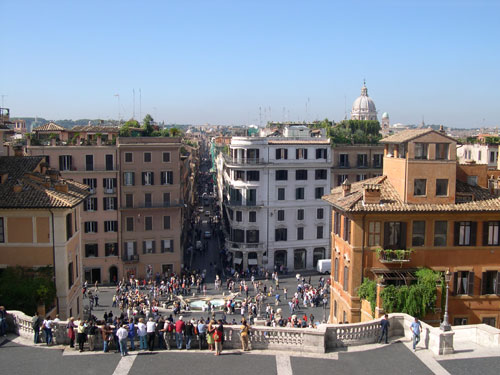 | Our next stop was the Spanish Steps and the Piazza di Spagna. |
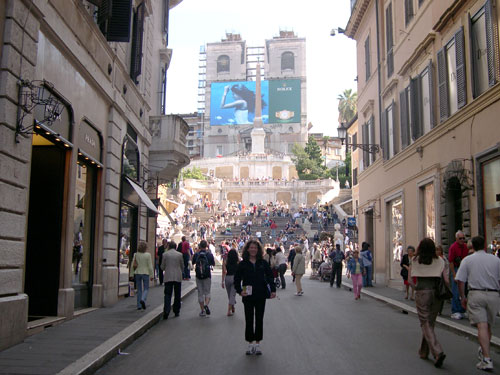 | We also walked down the nearby Via Condotti, one of the main shopping streets in Rome. You can see at the top of the Spanish Steps another Egyptian obelisk. |
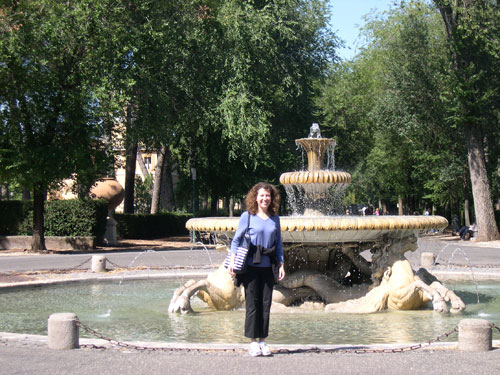 | Our next stop was the Villa Borghese, which is kinda like Rome's version of Central Park. Very beautiful grounds to walk around. There is also a zoo and an art gallery. But at this point we were pretty much burned out on walking around art galleries. |
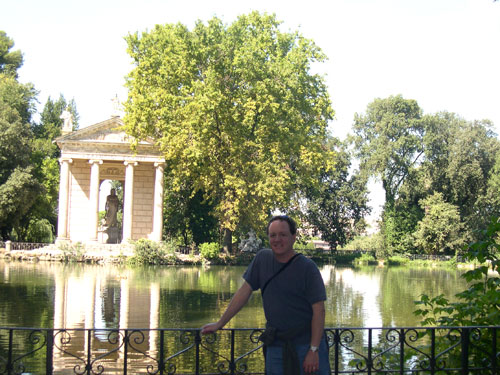 | |
 | The final place we visited was the Baths of Caracalla. |
 | |
 | |
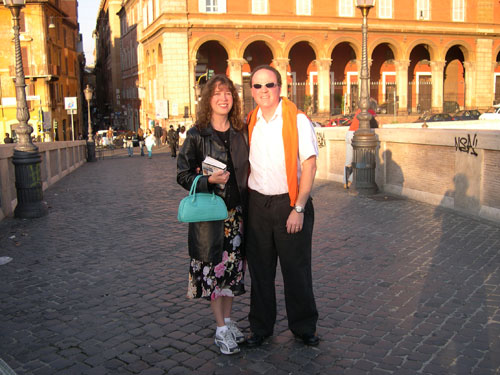 | |
 | The ubiquitous Smart Car (made by Mercedes Benz). These cute little cars are quite popular in Rome, no doubt due to their low cost, gas efficiency, and ease of parking. |
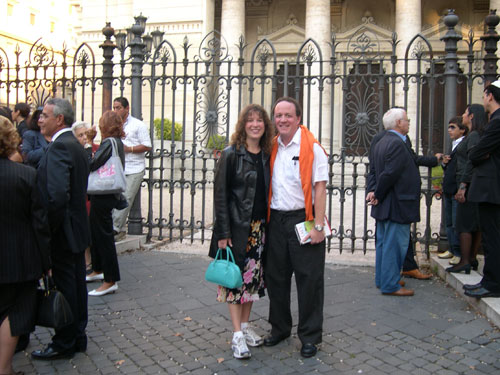 | We attended services at Rome's beautiful synagogue. We had a choice of the Roman or Sephardic services, and we figured that having never attended a Roman rite before, we would attend that one. |